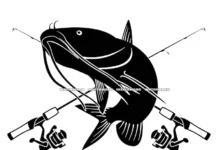Alternative species

Where:
The habits of all species of fish are intriguing. Year after year they seem to congregate in the same locations. It’s no different with these species.
Whiting:
This is usually in Passes, along the edges of boat channels, ship turn-around basins or off the Gulf beaches. I found the “areas” I catch them by drift-fishing and when I hooked up I’d anchor that location. Finding water that’s deeper than 10 feet is a good guideline. To find the larger whiting, you want to be over sand bottom (Tip: if you’re catching small squirrelfish, you’re in a good area for whiting). If you’re fishing the deep grass beds you may find whiting but they’re usually the smaller variety.
Silver trout:
Search in areas that are about 10 to 25 feet deep. A rule-of-thumb: A lot of the locations to catch silver trout are also locations where commercial crabbers drop their traps. Faster tides are usually best. Like other species, the schools are always moving but settle in when they find areas that have food. If weather conditions held higher winds before your trip, try to find the locations where there is clean water.
When:
Both species will remain in area waters until the water temperature start to climb significantly and then they move offshore and remain off the beaches or “make like snowbirds” and “head north” for summer. Early morning and late afternoon/early evening are the best time to find both species feeding best. Combine those times with full high tides or big low tides or good “moving” tides and you have the best chance to connect on big schools of both species. That being said, anglers may catch a lot of silver trout and whiting midday on a poor tide.
How:
Pieces of fresh shrimp will always catch whiting. Try a smaller, long-shank hook for easiest removal of whiting. Fairly small mouths, they get excited to see a shrimp meal and want to get the shrimp all the way down in their belly. The long shank hook helps with getting them off the hook faster. The silver trout will eat the shrimp, a variety of jigs lifted gently up and down off the bottom. The silver trout pound lures, making the rod tip bounce when they connect with the lure. I like the Silly Willy jig with a teaser for the silver trout and the whiting.

In areas where both species are caught, anglers might also benefit from being ready for a much larger opponent. I found this note from my archives, back in March of 2007: “Yesterday, I put a rod in the forward rod holder and made a phone call. The whiting will hook themselves so while I was talking on the phone the rod was bent from a self-hooked whiting. Then something very unusual happened. The whiting came up to the top and jumped. I reached down and opened the bail. An instant later the line bounced and I knew that whiting had just been inhaled. I said a quick ‘gotta go’ to my buddy and grabbed the rod in time to adjust the drag before the line broke. Some time later I pulled up a 40-inch cobia alongside the kayak.”
Back to the choice in lures: Using the yellow and gold tails bouncing for silver trout, “accidental” pompano are also a possibility. While silver trout and whiting will eat lures of just about any color placed in front of them, yellow/gold plastics or yellow Silly Willy/pink teaser will also be appealing to pompano, particularly when targeting is done around the Passes.
Ring the Dinner Bell:
Bring along plenty of ice and harvest the larger of each of these species. The are both easy to fillet. They are also both fish that specific cooking technique isn’t critical, and delicious just about any way you prepare them. I have instructed parents of kids who are resistant to eating fish to cut filleted whiting into strips and bread them, telling the kids they’re “fish sticks.” Trust me, they’ll think they’re better than “Mrs. Paul’s.” A flaky white meat, they are great prepared healthy (baked or pan fried with cooking spray instead of oil). Silver trout should be eaten fresh. A softer meat than the whiting, they don’t freeze well but are excellent eating. They last for a long time on ice but don’t bother trying to freeze the fillets. Whiting will freeze just fine, if you cover the fillets with just enough spring water to cover the fillets and then vacuum seal the bag before putting in the freezer.
- The Neil Blog… - July 26, 2023
- The Catfish - July 26, 2023
- update - July 22, 2023











